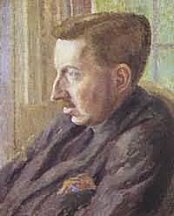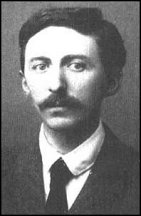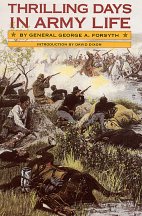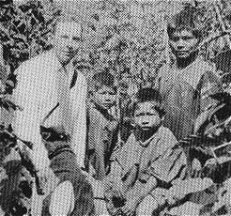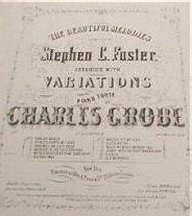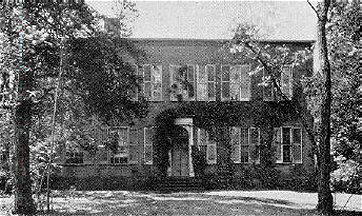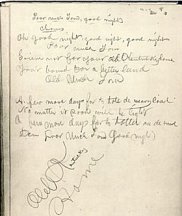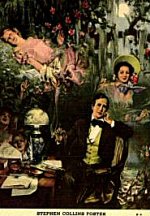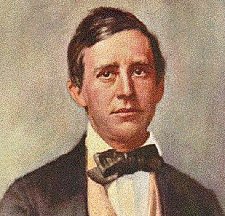 Stephen
Collins Foster, the ninth of William B. and Eliza T. Foster's ten
children (plus a son fathered by William before the marriage and later
raised as their oldest child), was born July 4, 1826, in a white cottage
high on the hillside above the Allegheny River in Lawrenceville, east of
Pittsburgh. The tenth child died as an infant, leaving Stephen as
the "baby" of the family to be indulged by older brothers and sisters.
Foster's life has become part of American legend. One thread of the
tale is that he detested school and so was poorly educated. In truth,
as a young boy Stephen evinced more interest in music than in other subjects.
But as the child of a middle-class family in an era before tax-supported
public education, he variously was privately tutored, then schooled at
private academies in Pittsburgh and in north-central Pennsylvania.
He expressed a distaste for rote learning and recitation, but was an avid
reader and eventually became a literate, well-educated person by the standards
of his day. He was musically literate as well; he probably received
some formal musical training from a German immigrant, Henry Kleber, an
accomplished and versatile musician who eventually exerted a major influence
on Pittsburgh's musical life as a performer, composer, music merchant,
impresario, and teacher. At age 20, Stephen went to work as a bookkeeper
for his brother Dunning's steamship firm in Cincinnati. There he
also sold some of his songs and piano pieces to a local music publisher
and had his first big hit with "Oh! Susanna." In 1850, already
with 12 compositions in print, the 24-year-old Stephen returned to Pittsburgh,
married 20-year-old Jane Denny MacDowell, and launched his career as a
professional songwriter. Their daughter Marion was born the following
year. In 1852 the couple took a delayed honeymoon, a month-long steamship
ride to New Orleans with friends, the only trip Stephen ever made to the
deep south (he had visited Ohio River towns in Kentucky as a child).
In 1853, he went to New York to be near his publishers; Jane joined
him in Hoboken, N.J., sometime in 1854. They returned to Pittsburgh
later that year, living first in the family home and then a series of boarding
houses after both of his parents died in 1855. Another thread in
the mythic fabric is that Foster dashed off perfect masterpieces in a flash
of inspiration, songs expressing the sentiment of American ante-bellum
South. Yet, aside from these absences, visits to the family in Ohio,
and until he went to New York for good in 1860, Stephen spent much of his
life in Pittsburgh where he worked consistently at his songwriting, keeping
a thick sketchbook to draft ideas for song lyrics and melodies. As
a professional songwriter of unparalleled skill and technique--not an untutored
musical genius--he had made it his business to study the various music
and poetic styles circulating in the immigrant populations of the new United
States. His intention was to write the people's music, using images
and a musical vocabulary that would be widely understood by all groups.
Foster worked very hard at writing, sometimes taking several months to
craft and polish the words, melody, and accompaniment of a song before
sending it off to a publisher. His sketchbook shows that he often
labored over the smallest details, the right prepositions, even where to
include or remove a comma from his lyrics. Rather than writing nostalgically
for an old South (it was, after all, the present day for him), or trivializing
the hardships of slavery, Foster sought to humanize the characters in his
songs, to have them care for one another, and to convey a sense that all
people--regardless of their ethnic identities or social and economic class--share
the same longings and needs for family and home. He instructed white
performers of his songs not to mock slaves but to get their audiences to
feel compassion for them. In his own words, he sought to "build up
taste...among refined people by making words suitable to their taste, instead
of the trashy and really offensive words which belong to some songs of
that order." Stephen Foster was a man with a mission, to reform black-face
minstrelsy, then the most pervasive and powerful force in American popular
culture Though another thread of the myth romantically portrays Stephen
Foster as such a pure artist that he had no business sense and squandered
all his wealth, in fact he kept his own account books, documenting down
to the penny how much his publishers paid him for each song, and he calculated
his probable future earnings on each piece. His contracts were written
out in his own hand; they are the earliest ones we know of between
American music publishers and individual songwriters. In reality, Foster
was not an idle street musician without direction in his life, he was a
pioneer. There was no music business as we know it (sound recording
was not invented until 13 years after his death; radio, 66 years);
no system of publishers and agents vying to sell new songs; no "performing
rights" fees from restaurant singers or minstrels or theater musicians
or concert recitalists; no way of earning money except through a
5-to-10 percent royalty on sheet music sales of his own editions by his
original publisher, or though the outright purchase of a song by a publisher.
There was no way to know whether or not he was being paid for all the copies
his publisher sold; there were no attorneys specializing in authors'
rights. Copyright law protected far less than it does today:
Foster earned nothing for other arrangers' settings of his songs, broadside
printings of his lyrics, or for other publishers' editions of his music.
In today's music industry he would be worth millions of dollars a year;
on January 13, 1864, he died at age 37 with 38 cents in his pocket and
a penciled scrap of paper that read, "dear friends and gentle hearts."
His brother Henry described the accident in the New York theater-district
hotel that led to his death: confined to bed for days by a persistent
fever, Stephen tried to call a chambermaid, but collapsed, falling against
the washbasin next to his bed and shattering it, which gouged his head.
It took three hours to get him to the hospital, and in that era before
transfusions and antibiotics, he succumbed after three days. Stephen
Collins Foster, the ninth of William B. and Eliza T. Foster's ten
children (plus a son fathered by William before the marriage and later
raised as their oldest child), was born July 4, 1826, in a white cottage
high on the hillside above the Allegheny River in Lawrenceville, east of
Pittsburgh. The tenth child died as an infant, leaving Stephen as
the "baby" of the family to be indulged by older brothers and sisters.
Foster's life has become part of American legend. One thread of the
tale is that he detested school and so was poorly educated. In truth,
as a young boy Stephen evinced more interest in music than in other subjects.
But as the child of a middle-class family in an era before tax-supported
public education, he variously was privately tutored, then schooled at
private academies in Pittsburgh and in north-central Pennsylvania.
He expressed a distaste for rote learning and recitation, but was an avid
reader and eventually became a literate, well-educated person by the standards
of his day. He was musically literate as well; he probably received
some formal musical training from a German immigrant, Henry Kleber, an
accomplished and versatile musician who eventually exerted a major influence
on Pittsburgh's musical life as a performer, composer, music merchant,
impresario, and teacher. At age 20, Stephen went to work as a bookkeeper
for his brother Dunning's steamship firm in Cincinnati. There he
also sold some of his songs and piano pieces to a local music publisher
and had his first big hit with "Oh! Susanna." In 1850, already
with 12 compositions in print, the 24-year-old Stephen returned to Pittsburgh,
married 20-year-old Jane Denny MacDowell, and launched his career as a
professional songwriter. Their daughter Marion was born the following
year. In 1852 the couple took a delayed honeymoon, a month-long steamship
ride to New Orleans with friends, the only trip Stephen ever made to the
deep south (he had visited Ohio River towns in Kentucky as a child).
In 1853, he went to New York to be near his publishers; Jane joined
him in Hoboken, N.J., sometime in 1854. They returned to Pittsburgh
later that year, living first in the family home and then a series of boarding
houses after both of his parents died in 1855. Another thread in
the mythic fabric is that Foster dashed off perfect masterpieces in a flash
of inspiration, songs expressing the sentiment of American ante-bellum
South. Yet, aside from these absences, visits to the family in Ohio,
and until he went to New York for good in 1860, Stephen spent much of his
life in Pittsburgh where he worked consistently at his songwriting, keeping
a thick sketchbook to draft ideas for song lyrics and melodies. As
a professional songwriter of unparalleled skill and technique--not an untutored
musical genius--he had made it his business to study the various music
and poetic styles circulating in the immigrant populations of the new United
States. His intention was to write the people's music, using images
and a musical vocabulary that would be widely understood by all groups.
Foster worked very hard at writing, sometimes taking several months to
craft and polish the words, melody, and accompaniment of a song before
sending it off to a publisher. His sketchbook shows that he often
labored over the smallest details, the right prepositions, even where to
include or remove a comma from his lyrics. Rather than writing nostalgically
for an old South (it was, after all, the present day for him), or trivializing
the hardships of slavery, Foster sought to humanize the characters in his
songs, to have them care for one another, and to convey a sense that all
people--regardless of their ethnic identities or social and economic class--share
the same longings and needs for family and home. He instructed white
performers of his songs not to mock slaves but to get their audiences to
feel compassion for them. In his own words, he sought to "build up
taste...among refined people by making words suitable to their taste, instead
of the trashy and really offensive words which belong to some songs of
that order." Stephen Foster was a man with a mission, to reform black-face
minstrelsy, then the most pervasive and powerful force in American popular
culture Though another thread of the myth romantically portrays Stephen
Foster as such a pure artist that he had no business sense and squandered
all his wealth, in fact he kept his own account books, documenting down
to the penny how much his publishers paid him for each song, and he calculated
his probable future earnings on each piece. His contracts were written
out in his own hand; they are the earliest ones we know of between
American music publishers and individual songwriters. In reality, Foster
was not an idle street musician without direction in his life, he was a
pioneer. There was no music business as we know it (sound recording
was not invented until 13 years after his death; radio, 66 years);
no system of publishers and agents vying to sell new songs; no "performing
rights" fees from restaurant singers or minstrels or theater musicians
or concert recitalists; no way of earning money except through a
5-to-10 percent royalty on sheet music sales of his own editions by his
original publisher, or though the outright purchase of a song by a publisher.
There was no way to know whether or not he was being paid for all the copies
his publisher sold; there were no attorneys specializing in authors'
rights. Copyright law protected far less than it does today:
Foster earned nothing for other arrangers' settings of his songs, broadside
printings of his lyrics, or for other publishers' editions of his music.
In today's music industry he would be worth millions of dollars a year;
on January 13, 1864, he died at age 37 with 38 cents in his pocket and
a penciled scrap of paper that read, "dear friends and gentle hearts."
His brother Henry described the accident in the New York theater-district
hotel that led to his death: confined to bed for days by a persistent
fever, Stephen tried to call a chambermaid, but collapsed, falling against
the washbasin next to his bed and shattering it, which gouged his head.
It took three hours to get him to the hospital, and in that era before
transfusions and antibiotics, he succumbed after three days.
Professional Career
While still an amateur songwriter, Foster realized that the minstrel
stage was the key to securing an audience for his songs. At first,
he circulated manuscript copies among various minstrel troupes. After
"Oh! Susanna" became a national hit following its performance
by the Christy Minstrels in 1848, the song was widely pirated by more than
two-dozen music publishing firms, who earned tens of thousands of dollars
from sheet music sales. But Foster received a mere $100 from a single firm
in Cincinnati. In that regard, "Oh! Susanna" was a financial
failure for Foster, but he learned two valuable lessons: one, his
potential to earn significant sums from songwriting and, two, the need
to protect his artistic property. During 1848 and 1849, eight more
of his minstrel songs were published, including "Uncle Ned," and "Nelly
Was a Lady." Determined to make a full-time career of writing songs,
Foster left his bookkeeping job in Cincinnati and returned to Pittsburgh
in late 1849 or early 1850. On December 3, 1849, he signed a contract
with the New York music publisher, Firth, Pond, & Co., thus officially
beginning his professional career. At first, Foster wrote ballads
and dances for parlor singers and pianists as well as minstrel songs, often
referred to as "Ethiopian" songs, for professional theatrical performers.
The minstrel songs, like the ballads, had simple melodies and accompaniments,
but their texts, written in dialect, depicted African-American slaves as
simple, good-natured creatures. Some of his earliest minstrel texts
even had crude caricatures and terms, i.e. "Away Down Souf" (1848) and
one verse that was later deleted form "Oh! Susanna." But as Foster
grew more ambivalent about the earlier "Ethiopian" songs, he began offering
a different image, that of the black as a human being experiencing pain,
love, joy, even nostalgia. "Nelly Was a Lady" (1849) is an eloquent
lament of a slave for his loved one who has died, apparently the first
song written by a white composer for the white audience of the minstrel
shows that portrays a black man and woman as loving husband and wife, and
insists on calling the woman a "lady," which was a term reserved for well-born
white women. "Angelina Baker" (1851) similarly laments a slave who
has been sent away by "old Massa." "Ring, Ring de Banjo!" (1851),
despite its apparent surface of frivolity, has the slave/singer leaving
the plantation "while the ribber's running high," a reference to escaping
while the bloodhounds could not pick up his scent, and traveling to freedom
on the Underground Railroad. "Old Folks at Home" (1851), which was to become
the most popular of all Foster's songs, conveys a sentiment that had almost
universal appeal--yearning for lost home, youth, family, and happiness.
Increasingly, the "Ethiopian" songs used the same musical style that Foster
created for his parlor ballads. Foster informed Christy that--as
we would put it today--he was trying to reform minstrelsy by writing texts
suitable to refined taste, instead of "trashy and really offensive words,"
and that certain of his songs should be performed in a pathetic, not a
comic style. (By "pathetic," Foster meant "to engender compassion.")
Foster also began using the term "plantation song" for his new compositions,
many of which were gentle and nostalgic in text with music that hinted
at Irish or Italian ancestry. Soon he dropped dialect altogether
from his texts and eventually referred to his songs as "American melodies."
The verse-chorus structure of these songs made them suitable for both the
minstrel stage and the parlor. In addition to "Old Folks at Home,"
some of Foster's characteristic songs of this type from the early 1850s
are: Farewell, My Lilly Dear" (1851) ~ "My Old Kentucky Home, Good Night"
(1853) ~ "Old Dog Tray" (1853) ~ "Jeanie With the Light Brown Hair"
(1854)
As the Civil War approached,
Foster's once-promising songwriting career seemed to be doomed. His
contracts with his publisher had ended, and he had sold all future rights
to his songs to pay his debts. Possibly in an effort to revive his
popularity, Foster reverted to writing plantation melodies. Of the
four he wrote in 1860, one is among his most memorable (and infamous) compositions--"Old
Black Joe." Belying the racial condescension its title epitomizes
in the Civil Rights era, "Old Black Joe" comes closest of Foster's famous
songs to the African-American spiritual, and it approaches that tradition
with sympathy and respect. It is like a secular hymn, praising the noble
spirit of the laborer at the end of his life.Sometime during that year,
Stephen finally left Pittsburgh and moved his family to New York.
About one year later, Jane took Marion back to Pennsylvania, and Stephen
spent the remaining few years of his life in New York, living alone in
lodging houses and theater district hotels. His trunk of manuscripts
and letters was lost somewhere in these moves. Because of the uncertain
economy of war time, he no longer could get a publishing contract, and
like all other songwriters was forced to sell his compositions outright
to publishers with no prospect of future earnings. Instead of writing
his own lyrics, as he had done so successfully in the past, he began collaborating
with a young poet, George Cooper, probably late in 1862 or early in 1863.
Cooper's texts were of a light-hearted, humorous vein, designed to appeal
to musical theater audiences. Songs they wrote together include:
"There Are Plenty of Fish in the Sea" (1863) ~ "Kissing in the Dark"
(1863) ~ "My Wife is a Most Knowing Woman" (1863) ~ "If You've Only
Got a Moustache" (1864) ~ "Mr. & Mrs. Brown" (1864) The
pair also produced some Civil War Songs--"Willie Has Gone to War" and "For
the Dear Old Flag I Die!" for example--but Foster's earlier songs found
far more favor among soldiers and civilians from both North and South than
did these later songs. During these final years, Foster also wrote a group
of Sunday school songs and hymns for song books published by Horace Waters.
Some of them, such as "Give Us This Day Our Daily Bread," are lovely;
"We'll Still Keep Marching On" is an example of the spirited homiletic
style of many of these pieces, which were intended for children.
Altogether, Foster produced almost one hundred songs during his final years
in New York. While few are scarcely known today, one remains an all-time
favorite--"Beautiful Dreamer," written in 1862 and published after his
death in 1864. Because he did not perform music professionally, as most
songwriters did to support themselves, Foster himself was not well known
to the public. Even during his lifetime, his songs were often referred
to as folk songs. For example, during the Gold Rush "Oh! Susanna"
became a kind of theme songs for the Forty-niners, who improvised countless
new lyrics for the jaunty tune as they made their way to California.
Today, most school children (as well as adults) still know the tune, but
comparatively few can identify Stephen Foster as the composer. Foster's
only real income was the royalty he earned on sheet-music sales.
Altogether he made $15,091.08 in royalties during his lifetime and almost
nothing in performing rights (yearly average was $1,371 for his 11 most
productive years). His heirs, Jane and Marion equally, later earned
$4,199 in royalties, so that the total known royalties on his songs amounted
to $19,290. Today, it would be worth millions. © University
of Pittsburgh, 2003
http://www.pitt.edu/~amerimus/foster.htm
Stephen Foster
Site |

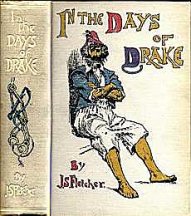
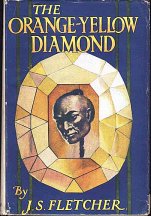
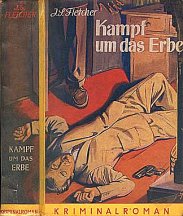
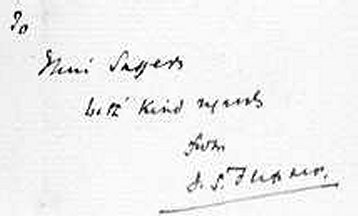
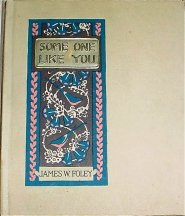
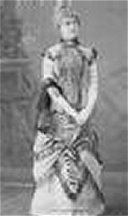
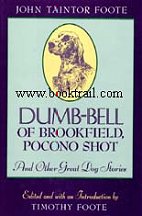
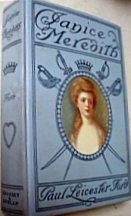
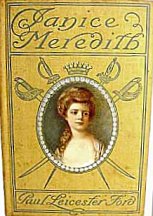
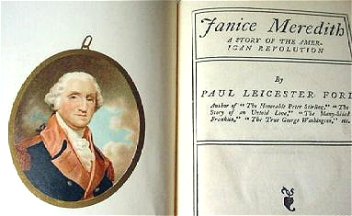
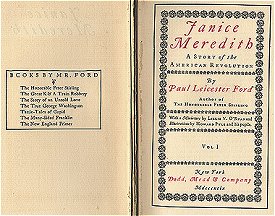
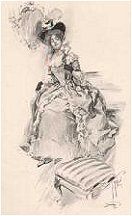
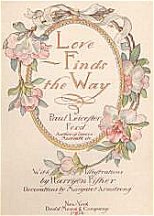
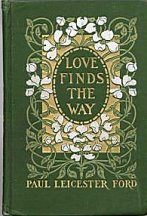
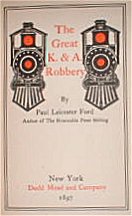
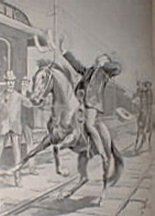
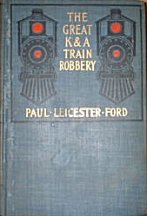
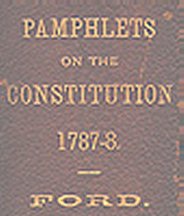
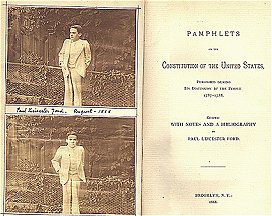
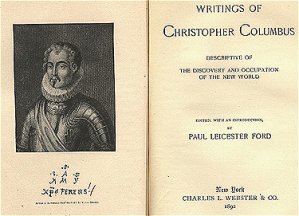
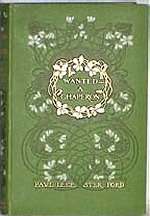
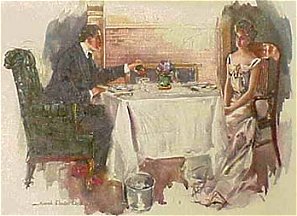
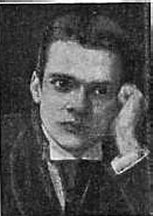
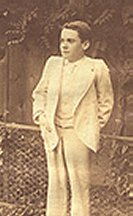
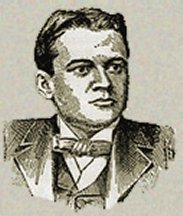
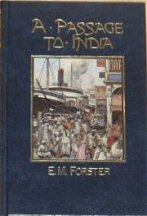
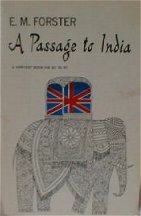 In
Forster's beautifully written novel about British India at the turn of
the century, a simple misunderstanding erupts into hostility. The plot
centers on Aziz, a young doctor who is initially tolerant of the British
presence in India. However, when he takes a group of Americans to the Caves
of Marabar and an American woman accuses him of raping her, his attitude
changes. Imprisoned and then released when the woman recants, Aziz becomes
thoroughly disillusioned and a proponent of a Hindi-Muslim alliance against
the British.
In
Forster's beautifully written novel about British India at the turn of
the century, a simple misunderstanding erupts into hostility. The plot
centers on Aziz, a young doctor who is initially tolerant of the British
presence in India. However, when he takes a group of Americans to the Caves
of Marabar and an American woman accuses him of raping her, his attitude
changes. Imprisoned and then released when the woman recants, Aziz becomes
thoroughly disillusioned and a proponent of a Hindi-Muslim alliance against
the British.
